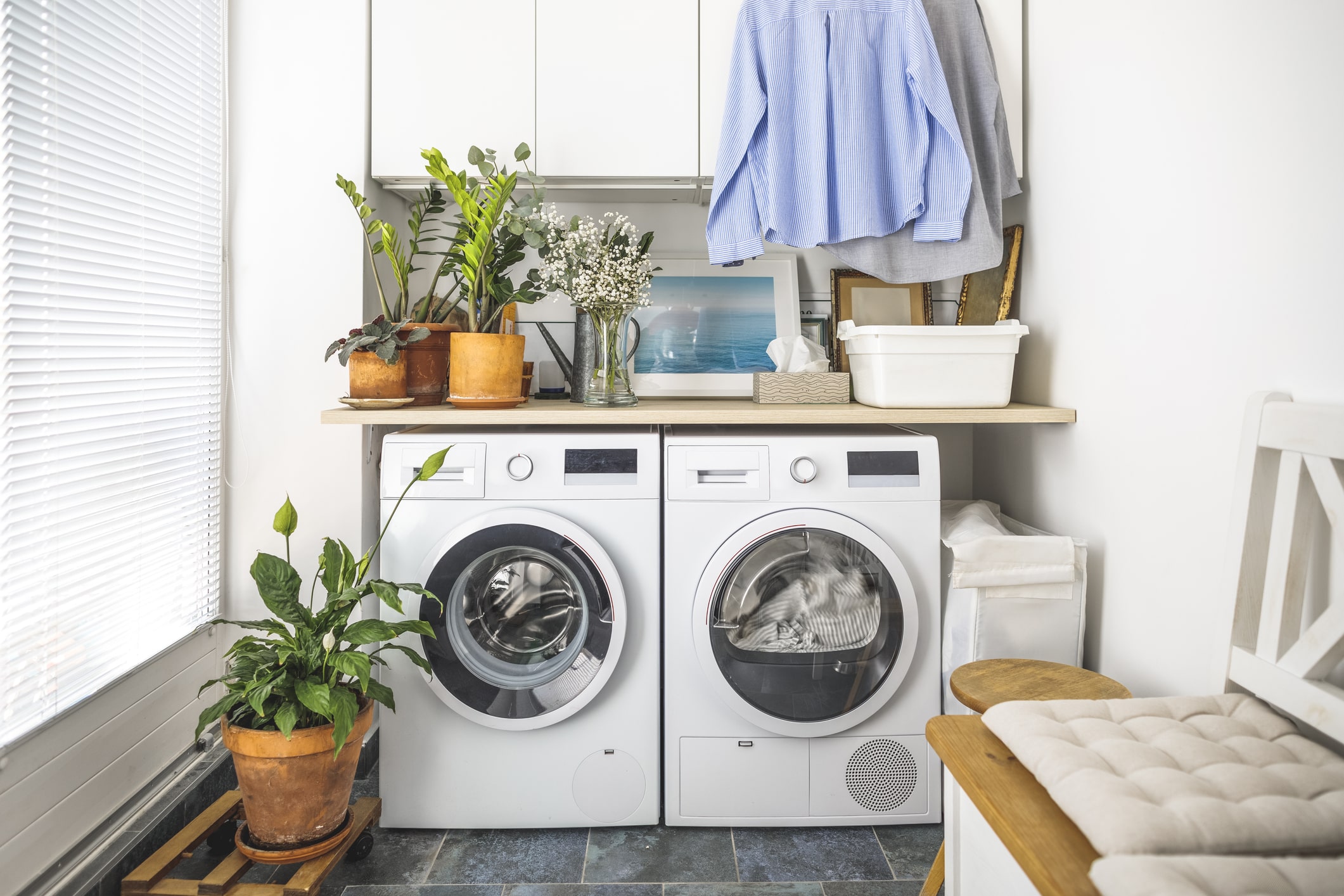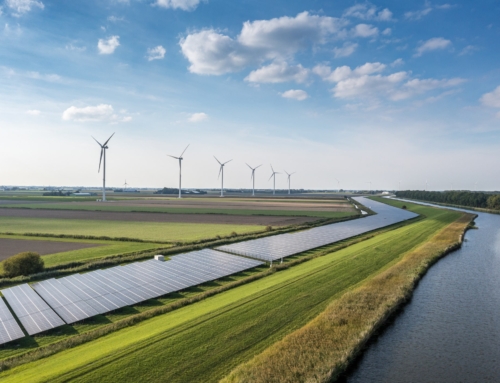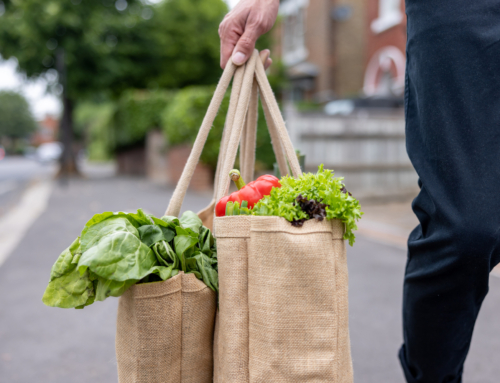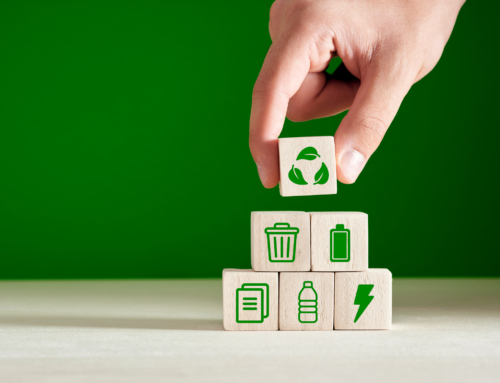Looking for ways to become more eco-friendly in your everyday life is a worthwhile challenge. Minor adjustments to your daily routine can leave a profound and lasting impact. But sometimes, the best way to make those changes aren’t clear—and it can be challenging to see the best way to protect the environment without letting go of modern efficiencies.
Surrounded by modern conveniences, it’s easy to lose sight of the impact familiar routines have on the environment. If you’re ready to include your laundry room activities in your journey toward a greener lifestyle, we’ve created these seven eco-friendly ways to wash clothes especially for you.

7 Eco-Friendly Laundry Tips Everyone Can Use
The luxury of a washer and dryer has saved people countless hours—not to mention aching muscles. Not everyone is ready for the total abandonment of modern convenience. But every person can find ways to personalize their path to a more sustainable laundry routine.
1. Use an Energy-Efficient Washing Machine
According to Energy Star, there are two important rating systems you should consider when looking for the most environmentally friendly washing machine:
- Integrated Modified Energy Factor (IMEF) takes into account the energy used during cycles, on standby, and when heating water. The higher the IMEF number, the more efficient the unit is.
- The Integrated Water Factor (IWF) measures water efficiency in the number of gallons used. The lower the rating, the more efficient the IWF of a machine.
Use a Front Loading Washing Machine
Huge strides have been made in the efficiency of top loading units and their design. Still, Energy Star-certified front loading washing machines are by far the most efficient—using 45% less energy and 50% less water than top loaders.
A top loading washing machine can use as much as 19 gallons of water for a full load, whereas a front loading washer can use as little as 7 gallons for the same size load.
2. Use Cold Water When Possible
Most of the energy used by your washing machine goes toward heating the water. In fact, this consumes around 90% of your washer’s energy. Needless to say, just switching to cold water is a substantially more eco-friendly way to wash clothes.
Your clothing might thank you for making a temperature change as well. Using hot water for the wrong clothes can make them fade and shrink.
In fact, according to Harvard’s Office for Sustainability, cold water is just as effective as warm or hot water cycles for regular everyday use.
Only Use Hot Water When It’s Needed the Most
If you do use hot water—get the most from your washing machine and your energy savings by grouping clothes that need warm or hot water the most—like underwear and socks. Wait to wash them until you’ve got a full load.
For other ideas and information about reducing your dependency on hot water cycles, Cold Water Saves is a valuable resource.
3. Don’t Wash All Your Clothes After Wearing Them Just Once
It may sound counterintuitive to what you were taught growing up, but some clothes can be worn multiple times before they need to be washed.
For example, Levi Strauss & Co. suggests spot-cleaning your jeans, occasionally hand-washing, and avoiding the wash cycle for their jeans altogether. You can consider the same advice for pullovers and jackets.
You should wash socks and underwear after each use, but for your other garments, consider how often you wear them before they’re truly dirty enough to wash.
4. Choose Eco-Friendly Detergents
The most widely-known laundry detergent brands commonly contain ingredients that not only harm the environment but can be harmful to your family as well. From artificial fragrances and dyes to formaldehyde, the complex range of chemicals in most detergents serve a purpose for cleaning. But the harm they can cause the environment far outweighs their benefits.
Of all the laundry detergent ingredients that concern environmentalists, phosphates are at the top of the list.
Phosphates help soften hard water, but they flow to waterways and cause eutrophication. When there is too much phosphorus in the water, it causes an excess growth of organisms that depend on it—namely algae and duckweed. The result is a deprivation of oxygen, killing fish and other aquatic life.
There are numerous eco-friendly detergents you can choose from that don’t contain these harsh chemicals, making them safer for you and the planet. You can check the Environmental Protection Agency’s list of safer choice products to get ideas on brands worth looking into.
5. Choose More Natural Clothing Fibers
Seeking more eco-friendly laundry solutions can go beyond the decisions you make to clean your current wardrobe. You can develop environmentally friendly buying decisions to include clothing that’s better for the environment.
Clothes made from synthetic fibers like acrylics, nylon, and polyester can shed thousands of harmful microscopic pieces of plastic. These microplastic fibers make their way into waterways, where they’re ingested by marine life and animals.
In a 2017 global evaluation, microfibers from laundry made up 35% of microplastic pollution in the world’s oceans.
Shopping for eco-friendly clothing made of bamboo, hemp, wool, and natural cotton can help reduce the ecological harm stemming from your washing cycle.
6. Wash Fuller Loads
You may think that smaller loads would conserve energy, but in reality, a full-sized load is a more eco-friendly way to wash clothes. Full loads make the best use of water and energy overall.
It’s just as important not to overload your washing machine. A full load should fill your washer to ¾ of its capacity. You want clothes to move freely while they’re being agitated, leaving plenty of room for the water to flow.
7. Reuse Your Laundry Water
One of the most empowering aspects of thinking green is the ability to make better use of your resources. This may not be an obvious option for most people, but you can reuse greywater from your washing cycle.
Greywater is the relatively clean water from laundry, showers, and your household sinks. If you’re interested in reusing water from your washing machine, do not make any changes on your own. You must seek the resources of a greywater specialist.
By replacing your washer’s discharge hose with a greywater system, you can further the use of each cycle for irrigating soil or a healthy lawn.
Living a More Sustainable Life
Following through with these sustainable laundry ideas isn’t always easy, but it’s a great place to start. When you consider the brands you choose, how you organize your laundry loads, and even how to repurpose and expand the value of the water you use, you’re not just helping the environment—you’re learning to adopt great habits that can enrich your life. Of course, you can help protect the environment by embracing all sorts of energy-saving tips.
The electricity and natural gas you use can also play a profound role in your sustainability journey. Kiwi Energy is dedicated to our mission of supporting sustainable organizations. Contact Kiwi Energy today to learn about our energy plans. If you’re in New York or Ohio, look into enrolling in our eco-friendly services today.






